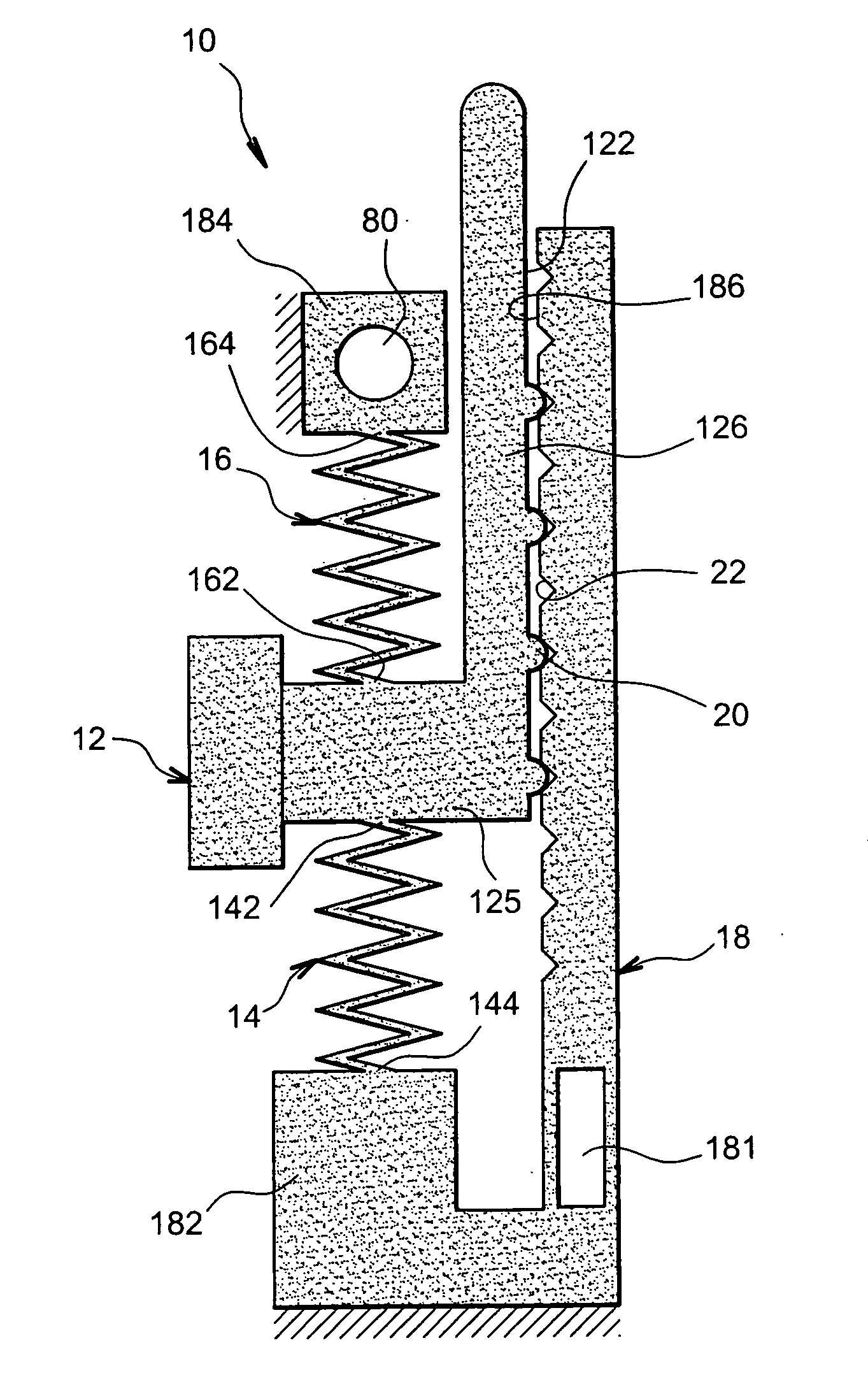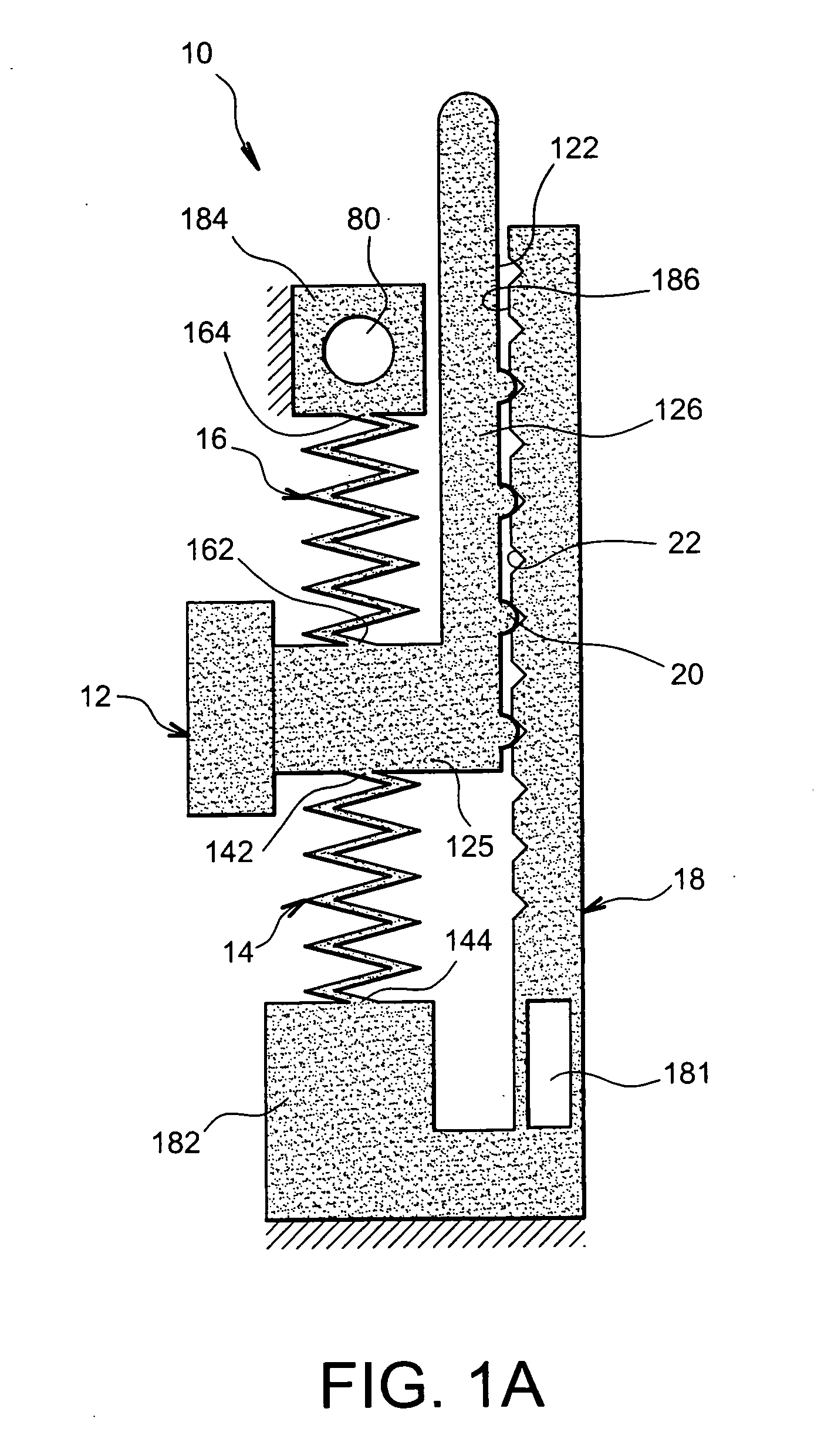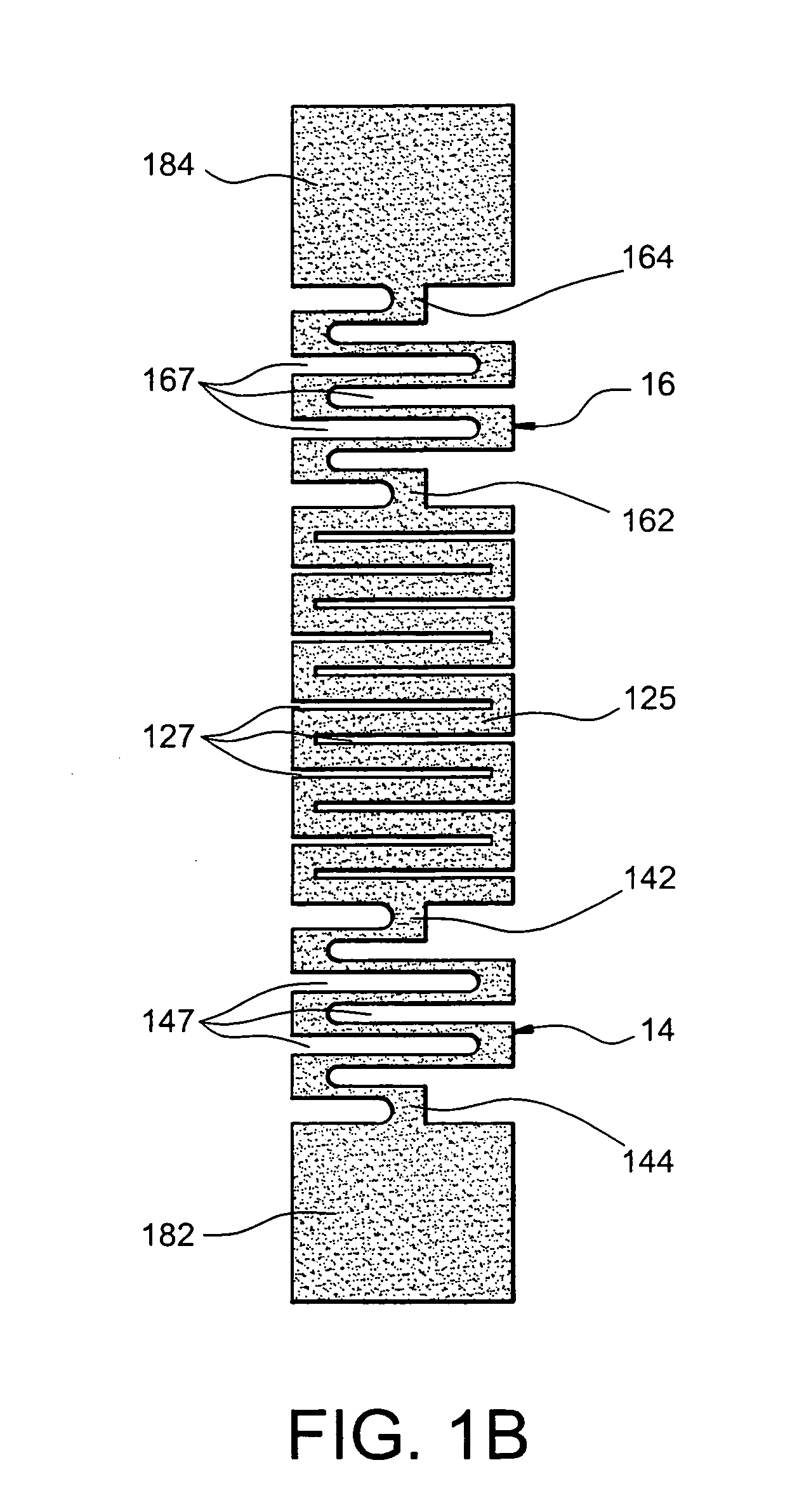Multi-Stable Actuator Based on Shape Memory Alloy and Touch-Sensitive Interface Using Same
a multi-stable actuator and shape memory technology, applied in the direction of relays, valve details, electrothermal relays, etc., can solve the problems of low heat conductivity of shape memory alloys, low heat conductivity of copper alloys, and high dissipation power, so as to increase the overall efficiency of the actuator and reduce the operating cost of the actuator
- Summary
- Abstract
- Description
- Claims
- Application Information
AI Technical Summary
Benefits of technology
Problems solved by technology
Method used
Image
Examples
first embodiment
[0045]First, FIG. 1A shows a shape memory alloy-based actuator 10 according to a first alternative of the first aspect of the invention.
[0046]The actuator 10 comprises a mobile part 12 and two movement means 14, 16 for moving the mobile part 12 with respect to a reference part 18, along a rectilinear path. The reference part 18 is stationary. The two movement means are connected to the mobile part 12 on either side thereof, and act in opposition, i.e. one of the movement means 14, 16 moves the mobile part 12 in one direction, and the other of the movement means 14, 16 moves the mobile part 12 in the other direction. In the example shown, the movement means 14, 16 are in the form of two springs capable of relaxing and contracting in the direction of the movement of the mobile part 12. They are connected by one of their ends 142, 162, respectively, to the mobile part 12. They are connected by the other of their ends 144, 164, respectively, to the reference part 18 of the actuator 10, ...
second embodiment
[0056] the guide means 24 comprise a plurality of elastic beams 24. These are arranged so as to be substantially parallel to one another in a direction substantially perpendicular to the direction of movement of the mobile part 12 when they are at rest.
[0057]They are connected by one of their ends 242 to the mobile part 12, and by the other of their ends 244 to the reference part 18 of the actuator 10. The two end connections of the elastic beams 24 are embedded.
[0058]According to a first alternative of the second embodiment shown in FIG. 2, there are two elastic beams 24 and they are both placed on the same side of the mobile part 12. They connect a connection zone 124 of the mobile part to a connection zone 188 of the reference part 18, which connection zones 124, 188 are substantially parallel to one another. Thus, the assembly formed by the two elastic beams 24, the connection zone 124 of the mobile part 12 and the connection zone 188 of the reference part 18 constitutes a four-...
third embodiment
[0065] the guide means comprise a plurality of elastic beams 246, 247, 248, 249, arranged so as to be substantially parallel to one another in a direction substantially perpendicular to the direction of movement of the mobile part 12 when they are at rest.
[0066]The elastic beams are connected by one of their ends to the mobile part 12, and by the other of their ends to the reference part 18 of the actuator 10. The two end connections of the elastic beams 246, 247, 248, 249 are embedded. According to this embodiment, the reference part 18 is stationary.
[0067]The elastic beams 246, 247, 248, 249 are combined into a first pair 246, 247, arranged on a first side of the mobile part 12, and a second pair 248, 249, arranged on a second side thereof. The first pair 247, 247 connects a first connection zone 124 of the mobile part 12 to a first connection zone 188 of the reference part 18, while the second pair 248, 249 connects a second connection zone 128 of said mobile part 12 to a second ...
PUM
 Login to View More
Login to View More Abstract
Description
Claims
Application Information
 Login to View More
Login to View More - R&D
- Intellectual Property
- Life Sciences
- Materials
- Tech Scout
- Unparalleled Data Quality
- Higher Quality Content
- 60% Fewer Hallucinations
Browse by: Latest US Patents, China's latest patents, Technical Efficacy Thesaurus, Application Domain, Technology Topic, Popular Technical Reports.
© 2025 PatSnap. All rights reserved.Legal|Privacy policy|Modern Slavery Act Transparency Statement|Sitemap|About US| Contact US: help@patsnap.com



